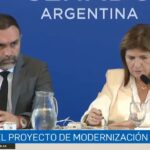
The cost of living in the US increased beyond the forecast in January, driven by higher prices of energy and eggs, challenging Trump’s economic policies
Inflation in the US increased more than expected last month, with the highest prices of eggs and energy contributing to raise the cost of living of Americans.
Inflation rose to 3% in January, the highest rate in six months, over 2.9% expected by economists.
According to the BBC, this increase occurs weeks after the US Central Bank decides to maintain interest rates, citing significant uncertainties about the direction of the economy.
This represents a challenge for US President Donald Trump, who made inflation a central point in his election campaign last year, but proposed policies such as higher import tariffs, which, according to economists, can press prices. up.
Ryan Sweet, chief economist at Oxford Economics, said the latest report could press Trump to reconsider these plans, which would increase taxes on products that enter the country.
“Tariffs can still be used as a negotiating tool to obtain concessions from other countries, but the political impact of exerting even a small high pressure on consumer prices through tariffs would not be good for the Trump administration,” he wrote he.
The increase in prices last month was wide, affecting car insurance, airline tickets, medications and other basic items.
Food prices rose 0.5% in the month, compared to 0.3% in December, with egg prices firing more than 15% due to scarcity caused by outbreaks of aviary flu.
This was the largest monthly increase in almost a decade, according to the Labor Department.
In contrast, clothing prices fell, while rents and other housing costs rose 4.4% in the last year, the smallest increase in 12 months since January 2022.
Basic inflation, which excludes food and energy and is seen by analysts as a better measure of underlying trends, was 0.4% in the month, the fastest pace since March.
“This is not a good number,” said Brian Coulton, chief economist at Fitch Ratings.
“This illustrates how [Federal Reserve] It did not conclude the work of reducing inflation precisely when new inflationary risks – from tariff increases and pressure on the growth of labor supply – begin to emerge. ”
The Federal Reserve increased interest rates sharply from 2022, hoping that the highest loan costs would cool the economy and relieve the pressures that were raising prices.
He started cutting the fees in September, stating that he wanted to avoid additional economy cooling.
But signs of persistent inflation above the bank’s 2% goal in recent months have led him to keep interest rates unchanged in January.
Federal Reserve President Jerome Powell told Congress on Tuesday that the bank is in no hurry to cut interest rates even more.
He noted that it is still unclear how Trump’s tariff plans will shape Fed’s policies, as measures can cause a slowdown in the economy, along with an increase in prices.
On Wednesday, Trump asked the Fed to reduce interest rates to work “together” with tariffs.
But some analysts said after the report that no longer expect interest rates this year.
At the beginning of negotiations, the main US stock rates opened, while interest rates on US government debt have risen, with investors betting that loan costs will remain high longer.
Source: https://www.ocafezinho.com/2025/02/12/inflacao-nos-eua-dispara-no-primeiro-mes-de-trump/

